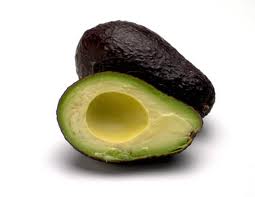 The fat-free craze in America started in the late 1980s when the scientific community started to correlate high-fat diets with heart disease and premature death. Rather than focusing on certain types of fats over others, the nutrient was demonized as a whole and people began to seek out fat-free and reduced-fat options in the grocery store. During this time, Americans did not become healthier, as was projected. Instead, the rates of obesity and heart disease continued to rise which hinted that fat is a more complex nutrient than once thought and is not the only nutrient responsible for negative health outcomes.
The fat-free craze in America started in the late 1980s when the scientific community started to correlate high-fat diets with heart disease and premature death. Rather than focusing on certain types of fats over others, the nutrient was demonized as a whole and people began to seek out fat-free and reduced-fat options in the grocery store. During this time, Americans did not become healthier, as was projected. Instead, the rates of obesity and heart disease continued to rise which hinted that fat is a more complex nutrient than once thought and is not the only nutrient responsible for negative health outcomes.
It’s now known that the type of fat matters greatly for overall health. There are three types of fats that we eat: trans fats, saturated fats, and unsaturated fats. Trans fats, recently brought into the spotlight with the FDA all but banning artificial trans fats for the foodservice industry, have been directly related to heart disease and the scientific community strongly recommends reducing intake of these fats to as little as possible. Saturated fats have been slightly more controversial since the research isn’t clear with their impact on human health. While many of the Dietary Guidelines recommend limiting saturated fat in the diet, there are other members of the health community that suggest the type of saturated fat matters most. Coconut oil has taken the health food industry by storm recently, despite it having more grams of saturated fat per tablespoon than butter. Proponents say that the oil’s medium-chain triglycerides do not impact the body negatively like other saturated fats do. However, the jury is still out on this as continued research is needed to confirm the validity of these claims.
That leaves one last type of fat: unsaturated. Found mainly in fish, nuts and vegetable oils, unsaturated fats have been recognized as having important health benefits. Unsaturated fats can be further categorized as monounsaturated fats and polyunsaturated fats. Monounsaturated fats are found in nuts, avocados and certain vegetable oils. Replacing saturated fats in the diet with monounsaturated fats has been shown to reduce blood cholesterol levels.
Polyunsaturated fats can be divided into Omega-6 fatty acids and Omega-3 fatty acids. Omega-6 fatty acids are found in nuts, seeds and many vegetable oils. While Omega-6 fatty acids are an important part of a healthy diet, they are less of a health concern due to their presence in the food supply compared with Omega-3 fatty acids. Omega-3 fatty acids are more difficult to obtain and have even more health-protecting qualities than Omega-6 fatty acids. They are found in fatty fish, some meat and poultry, and certain plant sources such as canola oil, flaxseeds and walnuts. Diets rich in Omega-3 fatty acids have been linked to having a lower risk of heart disease and better cardiovascular health overall.
The 2015-2020 Dietary Guidelines for Americans recommend replacing saturated and trans fats with unsaturated fats wherever possible. Restaurants hoping to provide more heart-healthy options for their diners can begin with this recommendation in developing new menu items. Solid fats, such as shortening or lard, can be replaced with vegetable oils. Canola oil is the lowest in saturated fat out of any vegetable oil, and has the second highest percentage of Omega-3 fatty acids ( flaxseed oil is number one, but isn’t as conducive to large-scale foodservice cooking). Nuts are also excellent sources of unsaturated fats, and can easily be incorporated into existing dishes without major formulation changes. Croutons can be replaced with nuts on a salad, or can be incorporated into sauces such as a classic romesco made with almonds. The only area of concern with these additions is that it’s very important to identify any menu items that contain tree nuts as they are one of the Top 8 food allergens.
Incorporating unsaturated fats into a restaurant menu is one of the easier ways the industry can begin to accommodate the new dietary guidelines. Common sources of these heart-healthy fats have become very mainstream over the past few years so the average diner’s palate
is more accustomed to such a flavor profile. Serving dishes that can be marketed as having a healthier fat profile can be a huge benefit for restaurants and can attract a wider variety of guests.



